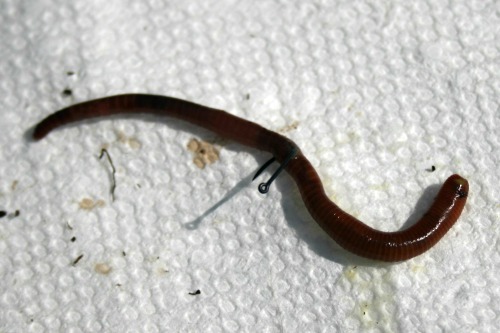Lake Hickory Bait Provides the Resources You Need for a Perfect Lawn
Lake Hickory Bait Provides the Resources You Need for a Perfect Lawn
Blog Article
Unlock the Tricks of Red Wigglers: Your Guide to Composting Success
The assimilation of red wigglers right into composting methods offers a considerable chance for improving soil health and advertising sustainability. These microorganisms are not simply reliable recyclers of organic waste; they supply a myriad of benefits that can transform garden management. Comprehending their requirements and actions is critical for enhancing their potential, from establishing an appropriate worm container to feeding them the best products. As we explore the necessary components of effective vermicomposting, one could wonder exactly how these little animals can bring about a much more lively and productive yard ecosystem.

What Are Red Wigglers?
(Red Wiggler Express)Red wigglers, medically referred to as Eisenia fetida, are a species of earthworm largely made use of in composting because of their exceptional capability to break down natural issue successfully. These worms are defined by their reddish-brown coloration and a segmented body, usually measuring in between 3 to 4 inches in length. Unlike various other earthworm types, red wigglers prosper in abundant, organic environments, making them perfect for vermicomposting systems.
Indigenous to The United States And copyright, they are typically discovered in decomposing fallen leaves and compost heap, where they play a critical function in nutrient recycling. Their adaptation to residing in a wet, cardiovascular atmosphere enables them to take in large quantities of natural waste, simplifying right into nutrient-rich castings that improve soil wellness.
Red wigglers duplicate quickly, with a single worm capable of generating a number of cocoons each week, each having numerous hatchlings. Recognizing the biology and habits of red wigglers is important for optimizing their capacity in composting applications.
Benefits of Utilizing Red Wigglers
Taking advantage of the power of red wigglers in composting offers numerous advantages that boost soil health and wellness and promote sustainable waste administration. These remarkable microorganisms effectively break down raw material, transforming kitchen area scraps and yard waste right into nutrient-rich vermicompost. This completed item is incredibly beneficial for plant development, as it boosts soil structure, boosts wetness retention, and boosts vitamins and mineral availability.

(Red Wiggler Express)In addition, the existence of red wigglers in your composting system can speed up the composting process, generating premium garden compost in a portion of the moment contrasted to conventional approaches. The spreadings produced by these worms are also including useful microorganisms that even more enrich the soil ecosystem.
Establishing Your Worm Bin
Producing a reliable worm container is a simple procedure that can dramatically improve your composting initiatives. Worm containers can be made from plastic storage space containers, wooden boxes, or readily readily available worm containers.
Following, prepare the bedding product, which offers as the worms' environment. A mix of shredded newspaper, cardboard, and coconut coir functions well, offering a comfy setting for the worms.

Feeding Your Red Wigglers
To ensure the wellness and efficiency of your red wigglers, it is important to give them with a well balanced diet that fulfills their nutritional needs. Red wigglers flourish on a diverse array of natural materials, which not just provide needed nutrients but likewise advertise reliable composting.
Begin by including cooking area scraps such as veggie peels, fruit cores, and coffee premises. Prevent citrus fruits, onions, and garlic, as these can be destructive to worm wellness. In addition, present shredded paper, cardboard, and dry fallen leaves to create a well-aerated setting.
Feeding frequency must be kept an eye on; generally, worms can take in half their body weight in food weekly. It is important to prevent overfeeding, as excess food can lead to unpleasant odors and draw in parasites. A good technique is to include food in percentages, enabling worms to process it before introducing extra.
Maintaining dampness levels is also essential; the bed linens must be wet however not soaked. Last but not least, make certain to routinely inspect the temperature level and pH degrees of the container to guarantee an optimum atmosphere for your red wigglers, ultimately enhancing their composting efficiency.
Harvesting and Utilizing Garden Compost
An effective composting process with red wigglers finishes in the abundant, dark garden compost understood as vermicompost, which can significantly enhance dirt health and wellness and plant growth. Harvesting this nutrient-dense material usually takes place every three to six months, relying on the dimension of your system and the quantity of raw material being processed.
To harvest, gently separate the garden compost from the worms and any kind of undecomposed materials. One efficient approach includes moving the contents of the bin to one side and adding fresh bed linen and food to the void, encouraging the worms to move. After a few days, the compost can be gathered from the contrary side.
It is necessary to utilize vermicompost properly to maximize its advantages. By integrating vermicompost into your horticulture routine, you not only reuse organic waste yet additionally create a growing environment that supports lasting horticulture practices.
Conclusion
In summary, red wigglers serve as phenomenal allies in Lake Rhodhiss Bait composting efforts, transforming natural waste into nutrient-rich vermicompost. By understanding the optimum conditions for their environment, feeding requirements, and garden compost harvesting techniques, garden enthusiasts can improve dirt health and wellness and advertise plant vitality.
Report this page